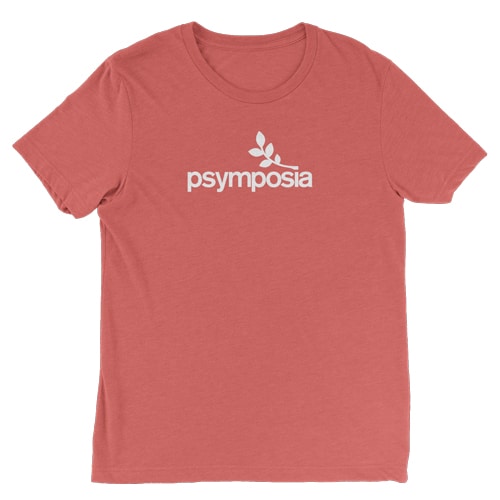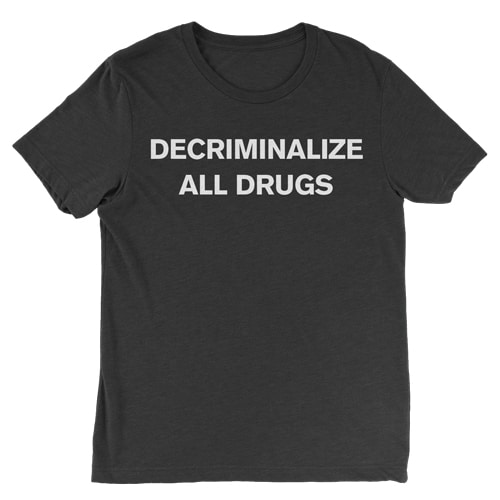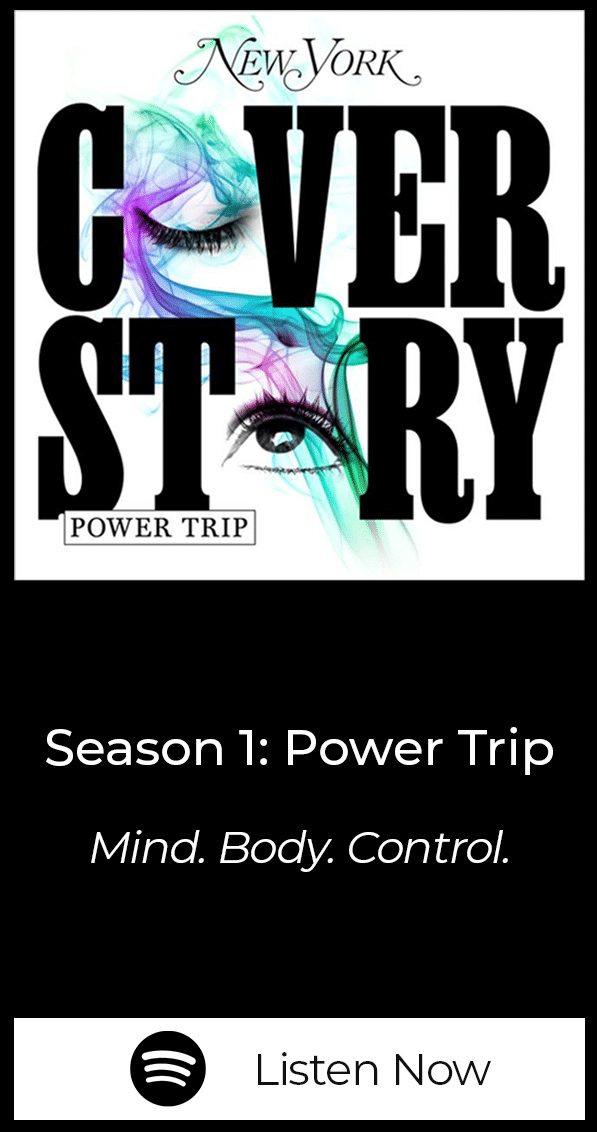This is what psychedelic mainstreaming looks like…in Arizona
As psychedelic medicalization and the potential profits of a “virgin market” loom large, new organizations are increasingly looking to gain legitimacy within the field. Mainstreaming means the doors of this field are being thrown wide open.
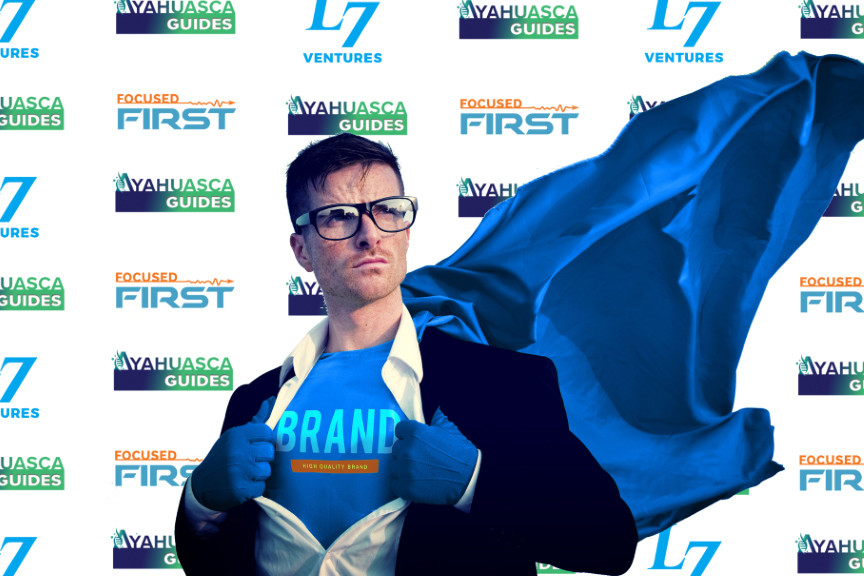
Psymposia is a 501(c)(3) nonprofit research and media organization that offers critical perspectives on drugs, politics, and culture. We rely on contributions from our readers and listeners. Your support is vital to sustaining Psymposia.
Support Psymposia’s independent journalism on Patreon and help us drive the Mystery Machine! We’re a bunch of meddling kids who are unmasking the latest shenanigans on the psychedelics beat.
Traditionally, psychedelic conferences have been hosted by well-known people and groups within psychedelic spaces. As psychedelic medicalization and the potential profits of a “virgin market” loom large, new organizations are increasingly looking to gain legitimacy within the field. Mainstreaming means the doors of this field are being thrown wide open. It’s everyone’s responsibility to hold people and institutions to the highest standards when publicly disseminating psychedelic information.
When I heard about the Arizona Psychedelics Conference, I was rather intrigued. The fact that a student organization at a college of naturopathy was hosting a two-day conference explicitly geared towards the mainstream medicalization of psychedelics, while advertising the opportunity to “expand your networking,” piqued my curiosity. I took a look at the organizers and sponsors, realized something wasn’t quite right–particularly with a sponsor called Ayahuasca Guides— and started digging. The following is an overview of what I found, and includes important considerations for the broader “psychedelic community” as more people flock to this field.
Psychedelic conferences offer beneficial opportunities for people to meet face to face and learn about psychedelics. However, the quality of these events hinges on their participants providing accurate information. As new actors enter these spaces, we must practice due diligence and evaluate them based on their merits.
To be clear, the long-term vitality of psychedelic research requires new participants (both sanctioned and underground) in the field. But, when newcomers situate themselves in positions of authority–while evidencing their inexperience and ignorance–it is our responsibility as communities of critically-engaged psychonauts, students, researchers, and professionals to challenge their motivations and qualifications. L7 Ventures’–a marketing and PR firm involved in the creation of Ayahuasca Guides–involvement in the upcoming Arizona Psychedelics Conference illustrates some dynamics of this phenomenon.
The conference is being hosted by Entheogenic Research Awareness (ERA), a student organization at the Southwest College of Naturopathic Medicine (SCNM). ERA is led by Amanda Ryskowski and Elliot Zyglis. They’re joined by Raymond Ryskowski, Amanda’s husband, an army veteran who credits ayahuasca with healing a number of mental and physical conditions he had been experiencing for some time. According to its Facebook page, “ERA’s vision is a new paradigm of healthcare which honors indigenous knowledge of psychoactive substances and their derivatives while upholding the highest standards of evidence-based medicine.” This statement is intriguing in light of the historic tensions and outright antagonism between evidence-based medicine and naturopathy.
Prior to my contacting the organizers, two of the five people listed on the “Our Team” page were Ethan Fialkow and Van Thu Nguyen, members of L7 Ventures. A third L7 employee, L. Burke Files, is slated to give a talk entitled, “Getting it Right: the Path from Faith to Fact.” Of the L7 staff involved with the event, only Fialkow disclosed his L7 affiliation in his bio.
The organizers of the conference first contacted me on January 28th, to address my inquiries about L7’s role in the event. Soon afterwards, the team page underwent numerous edits, and eventually both Fialkow and Nguyen were removed.
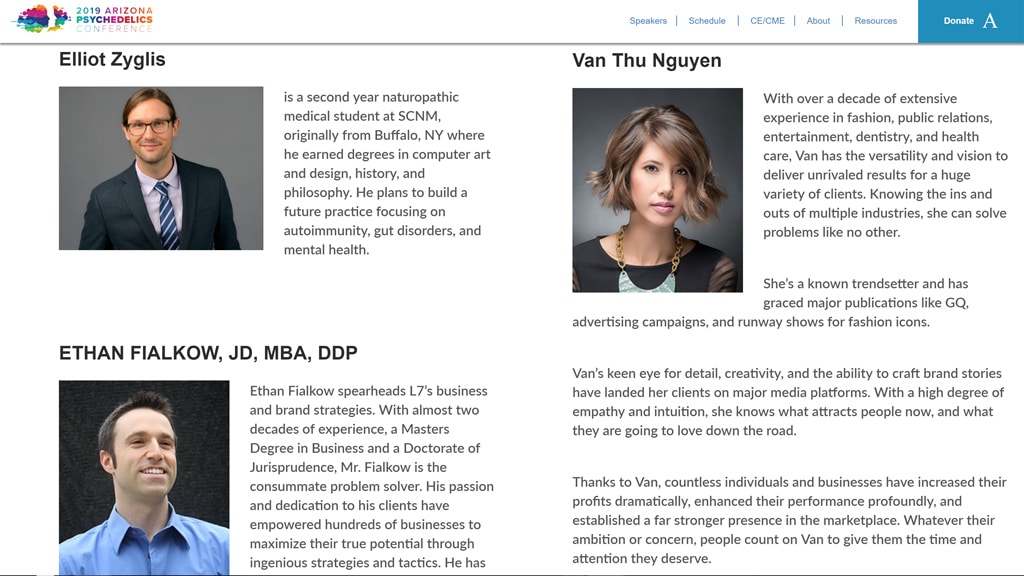
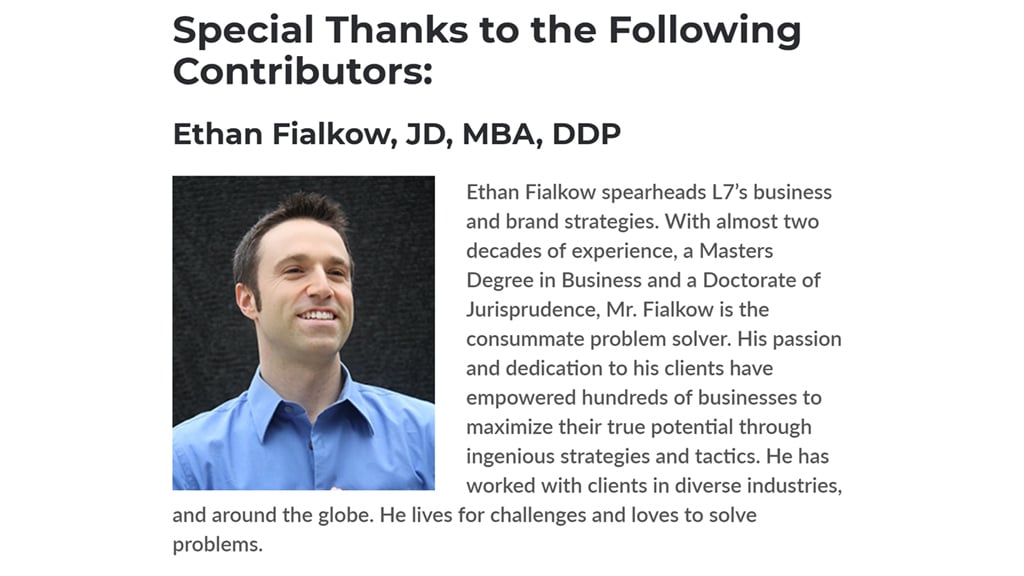

Prior to my contacting the organizers, three of the conference’s twelve homepage sponsors were associated with L7: Ayahuasca Guides, Focused First (a content-marketing site), and L7 Ventures. Additionally, the logos of all three sites were prominently featured on the Partners & Exhibitors page. After reaching out to the organizers for comment, all three sites were eventually removed.

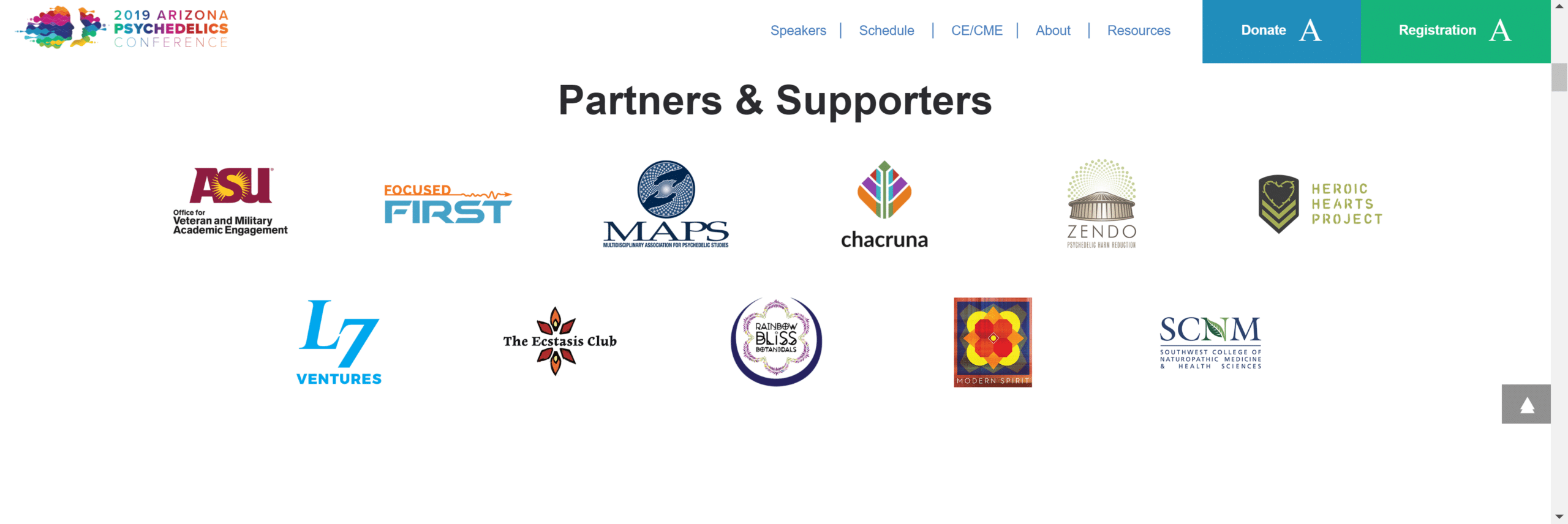

The L7 website states, “With over 30 years of turning the underdogs into market and industry leaders, we have earned our stripes. We deliver data-driven, risk-mitigating competitive advantages every single time. And generally, we hit a home run right out of the gates.”
I guess I must have thrown a knuckleball.
So what, exactly, is L7’s connection to psychedelics?
Prior to my repeated inquiries, Ayahuasca Guides, Focused First, and L7 Ventures were all featured prominently throughout the conference website. Ayahuasca Guides was the most troubling for those concerned with psychedelic commodification and harm reduction.
Consider this excerpt from their Frequently Asked Questions (FAQs) page:
Who uses Ayahuasca?
Ayahuasca is used by people all over the globe and of all walks of life. Many successful industry leaders have used it as well.
Here is a list of some of them
Tim Ferris [sic]
Audrey Marcus [sic]
Graham Hancock
Gabor Mate
And many of the successful people you admire…
Here we see the exclusion of indigenous people and emphasis on white men from industrial contexts. Additionally, the statement that, “…many of the successful people you admire [use ayahuasca],” (and therefore, you should too!) strikes me as irrelevant and serves no purpose beyond marketing.
The majority of the FAQ is essentially meaningless.
“Who should take ayahuasca,” is answered with, “Anyone who is ready for it, and does not fall under the risks categories listed here.” Except there are no “risks categories” listed on the FAQ page, nor is there an explanation of what “ready for it” means. How do you know you’re ready for an experience you’ve never had? This isn’t a simple question, nor is it being asked about a trivial experience.
Who’s behind Ayahuasca Guides? No one will say…
Troubled by the inaccuracies on Ayahuasca Guides, I asked the organizers about their relationship with the site and L7. According to the Ryskowskis, Nguyen attended an ERA event and offered to advise them on marketing the conference. Eventually, she suggested Fialkow as a web designer for the event. The organizers acknowledged problems with the content on Ayahuasca Guides and stated that they had not looked thoroughly at the information provided.
After emailing with the organizers, I reached out to L7’s founder, Ethan Fialkow, to learn more about the role of L7 and Ayahuasca Guides in the conference. Fialkow denied that Ayahuasca Guides was an L7 site and told me, “That’s not in the L7 family. That’s a project we did for a client. So it’s not within the group, it’s just a free resource.”
Despite Fialkow’s denials of Ayahuasca Guides being an L7 site, the “LEGAL STUFF” section of Ayahuasca Guides stated:
L7ALPHA does not guarantee the accuracy, entirety or timeliness of any of the data and/or programs (“Information”) available at this L7ALPHA Site… Any use of this site is at your own risk. L7ALPHA makes no representations, warranties or guarantees that use or results of the use of the site (including all of its content) is or will be accurate, reliable, current, uninterrupted or without errors.
The entire “LEGAL STUFF” section of Ayahuasca Guides was deleted just prior to Fialkow and I speaking, after the organizers had been made aware of my questions.
Fialkow told me, “Sometimes it will be just like a clone, and there’s holder text and stuff like that. So that’s probably why it looked like it was in the family of L7, but it’s not.”
When I asked about the client, Fialkow stated, “I can’t disclose that, unfortunately. They’re just someone in the space. At some point I’m hoping they’ll put more information up there, but they’re no one big or special.”
I reached back out to the organizers twice, in an effort to confirm Fialkow’s claim, but have not received a reply as of publication. A backlink search of Ayahuasca Guides shows that the Arizona Psychedelics Conference is the only page that has ever linked to the Ayahuasca Guides site.
Prior to my initial inquiry, the Resources page sandwiched Ayahuasca Guides and Focused First between the well-known organizations Erowid, the Multidisciplinary Association for Psychedelic Studies, and the Heffter Research Institute. Afterwards, Ayahuasca Guides was removed, but Focused First was kept as the third link on the page; listed above numerous established psychedelic resources, despite having nothing to do with psychedelics. After I reached out for comment on this, Focused First was moved to the bottom of the page, and eventually removed altogether.
Harm reduction is about accurate information, not consumer marketing
As of January 29th, Ayahuasca Guides was riddled with inaccuracies and misinformation, such as:
Incorrect ethnobotanical data:
“B. Capii [sic]…leaves or bark contain Dimethyltryptamine.”
They don’t. B. caapi contains no DMT whatsoever.
Incorrect pharmacological claims:
“…every living plant and animal produces DMT.”
There are plenty of plants which don’t contain DMT, and there’s no evidence that every animal produces it.
Incorrect historical claims:
“Ayahuasca…has been used for 14,000 years…in the Amazon…”
Archeological evidence indicates that humans first inhabited the Amazon ~11,200 years ago. Additionally, numerous sources suggest ayahuasca has been used for ~5,000 years. However, Dr. Stephen Beyer argues it actually only dates back to about the 17th century.
Shortly after my phone call with Fialkow, during which I informed him of the actual date ranges for these claims, this text was edited to read:
“Ayahuasca…has been used for hundreds if not thousands of years…”
Misspellings of the botanical components of ayahuasca brews (as well as numerous typos throughout):
“B. capii,” “Banisteropsis Caapi,” “Audrey Marcus,” “Tim Ferris,” “phycological,” and many others.
Statements offered without any context, presenting hollow phrases that sound authoritative while offering little to no real information.
“The power of the brew comes from the Ayahuasca vine…”
A complete lack of citations for any of the supposedly factual claims.
But guess what? You can’t read any of this because they password-protected the site after I started investigating. Lucky for you, I backed it up.
“Half a gallon” of ayahuasca, about as safe as water…
Beyond these numerous issues, Ayahuasca Guides offers rather tenuous “safety data.” The “What is Ayahausca” section states:
The LD50 of ayahuasca is about half a gallon. This is the dosage at which 50% of a given population would be killed. In fact, studies to establish the LD50 failed so the amount was estimated. This toxicity is on par with water, which is also lethal in high doses.
There are several massive problems with this “safety” analysis. First and foremost, when discussing most psychedelics, LD50 is generally not the primary safety concern. LD50 is a measure of toxicity and many psychedelics have a rather high LD50. It offers no commentary on the psychological effects of a given compound. Failing to elaborate on this point in the context of providing vague toxicity data is an oversight that risks creating a false sense of safety in the reader, especially when comparing ayahuasca to water.
Additionally, “half a gallon” of ayahuasca is a meaningless metric. Ayahuasca is not a standardized preparation; a half-gallon could contain a kilo of B. caapi, or it could contain five kilos of B. muricata; it might contain two kilos of P. viridis, or it might contain three kilos of D. cabrerana; it may include admixture plants that contain tropane alkaloids or nicotine, or it may not; perhaps it was simmered for days, potentially contributing to a reduction reaction of the harmala alkaloids and shifting the ratios of harmine, harmaline, and tetrahydroharmine; there’s simply no way to know. Referring to “half a gallon” as a measure is dangerously irresponsible. It perpetuates the false notion that ayahuasca is a singular, consistent preparation. Simply put, it’s not.
I reached out to two conference participants who also have organizations sponsoring the event, Dr. Bia Labate (anthropologist) and Dr. Joe Tafur (medical doctor and shamanic medicine practitioner) for comment regarding these claims.
Labate said, “I did look into the site, and yes, agreed, I find it poor…I also agree that…we should aim for excellency in our field. However, on the other side I do not see a huge problem with this site at all. Unfortunately I have seen a million times worse in the ayahuasca universe out there!”
Tafur stated, “I don’t agree with everything they have written…” but didn’t acknowledge any specific problems with the site.
When psychedelic events are sponsored by people or groups that disseminate misinformation, it presents an inherent conflict of interest between harm reduction and self-promotion. Discounting the necessity of academic rigor in the context of a psychedelic conference seems at odds with the scathing critiques Labate offered of the Ethnobotanical Stewardship Council (ESC) in 2015.
Labate maintains that Ayahuasca Guides’ misinformation isn’t significant because the site isn’t as large or as well-connected as the ESC, and due to her belief that ayahuasca is difficult to brew. Yet, reports on the DMT-Nexus demonstrate just how many people have completely overdosed themselves on homebrewed ayahuasca preparations, precisely due to this kind of misinformation. Picking and choosing who deserves scrutiny–particularly given the nature of Labate’s critiques against the ESC–evidences realpolitik, not science or harm reduction.
The Elite Perfectibility of Ayahuasca
In a recent article titled “Combining Psychedelics with Capitalism May Cause Unintended Side Effects,” Geoff Bathje asks, “Will [psychedelics] become part of ‘elite perfectibility,’ where those who can afford treatment enter an endless cycle of self-improvement?”
Ayahuasca Guides offers numerous attempts to present ayahuasca in exactly that context:
…with Ayahuasca you have your hangover first, then reap the benefits after. So then when why do ayahuasca? Like going to a therapist, or yoga, the workout doesn’t feel good, but it feels good after.
In other words, drink ayahuasca as a “spiritual workout.”
The problems with this line of thinking are numerous. First, ayahuasca can’t do the work of living your life for you. Psychedelics can be tools for self-reflection and catalyzing personal growth. However, at the end of the day, you are the person who lives your life. You are the person responsible for your actions, your growth, and how you choose to be in the world. Creating expectations that ayahuasca will somehow improve you because it doesn’t feel good only makes sense in the context of marketing its healing potential. And make no mistake, Ayahuasca Guides wants you to believe in the healing power of ayahuasca.
In fact, The Science of Ayahuasca section states:
…Ayahuasca can actually help to regrow damaged receptor sites. This might explain Ayahuasca’s ability to permanently heal depression in some people with a history of SSRI usage. [emphasis added]
And, the Will I have a negative experience? section states:
This experience may not be pleasant, but it almost always results in healing.
Almost always? Healing of what? These unfounded claims aren’t unique; would-be gurus like Gerard Powell and Paul Austin are promoting “miracles,” “soul merging,” and healing mental illnesses through ayahuasca ceremonies. Medical marketing that utilizes rhetoric about “ayahuasca healing” is incredibly irresponsible and outright dangerous. This type of marketing is no different than the direct-to-consumer pharmaceutical advertising that’s banned worldwide–except for the US, New Zealand, Brazil, and Hong Kong–because of its predatory approach to would-be patients.
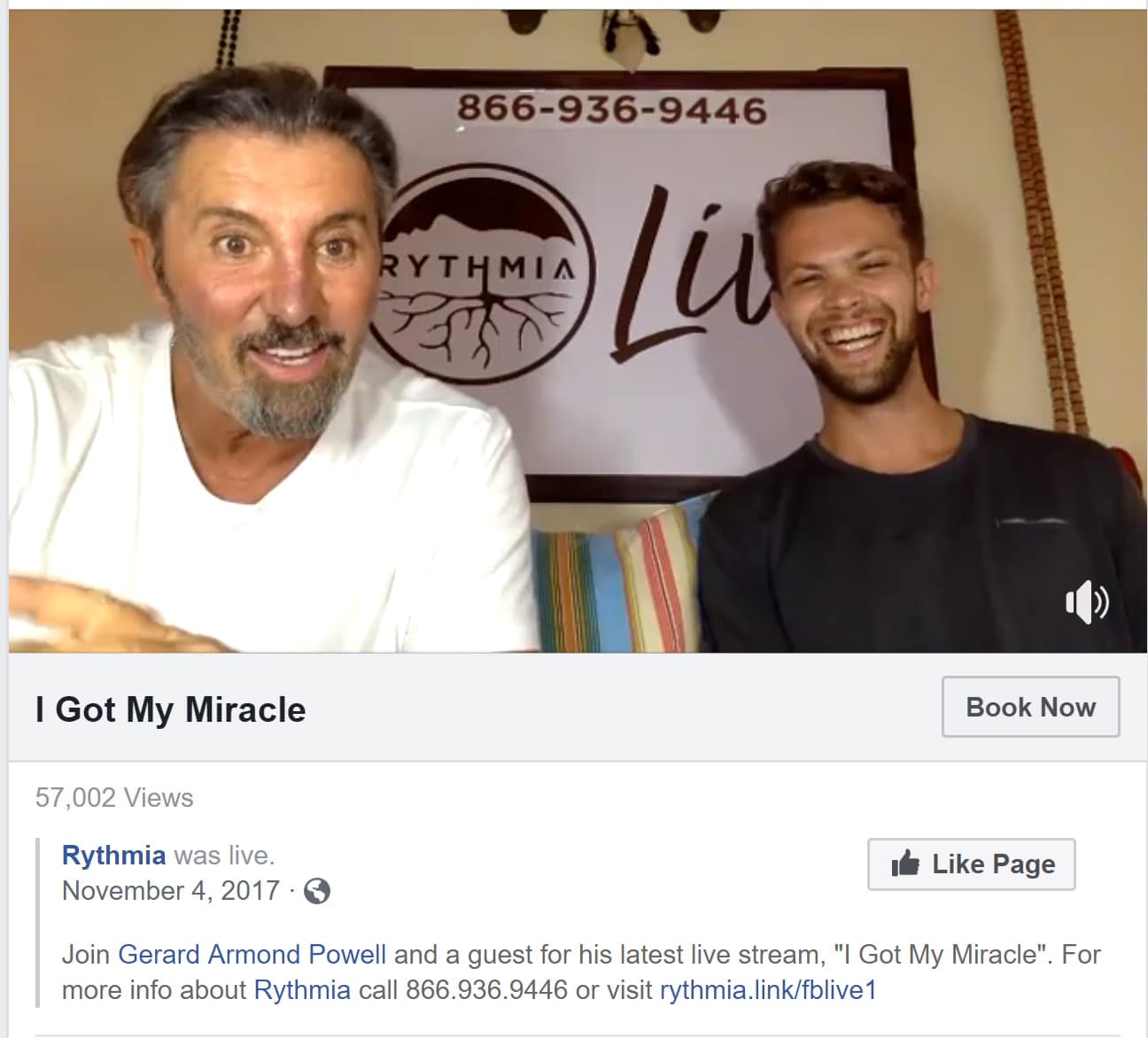
There are numerous trusted resources for people interested in learning about ayahuasca, such as the DMT-Nexus, Erowid, Drugs Forum, Ayahuasca Forums, and Psychonaut Wiki. Ayahuasca Guides provides absolutely zero novel information, while presenting an alarming amount of misinformation and questionable claims.
Focused First: Are there any good safe cleaners?
The remaining L7 site that was featured on the conference website is Focused First, which offers numerous health tips while disclaiming the health advice it offers. From a harm reduction perspective this site is less concerning than Ayahuasca Guides. But, it’s rather illuminating regarding L7’s approaches, which appear to be in the same camp as Alex Jones’ Infowars supplement marketing approach.
Focused First presents a mix of buzzwords and retail marketing links, offering “self-improvement” tips while pushing consumer products on the reader. For example, the FAQs page presents a definition of “biohacking” and then asks the reader:
Are there any good safe cleaners? So far we have found the following to be great solutions for cleaning at home.
It goes on to provide a link to the product website, without ever indicating what cleaning products have to do with biohacking or Focused First. Elsewhere on the site, Focused First offers a range of “guides” on sleeping, supplements, meditation, and work productivity, with numerous product links scattered throughout each guide.
Focused First is light on meaning and heavy on marketing, offering quick fixes to complex problems; insisting on personalized, consumer-oriented treatments rather than an examination of the actual problems they’re claiming to address. When taken together, Focused First and Ayahuasca Guides offer a telling glimpse at how we might expect L7 to build out the latter site: barely coherent lists of assertions strung together in order to suggest a perceived need for curative products or ceremonies; a dangerous approach.
The Fraudsters of Oklevueha Native American Church
In doing a quick run-through of the conference site prior to publishing this article, I found that Adam Yellowbird DeArmon, ICSAW branch minister of the Oklevueha Native American Church (ONAC), had been added to the speaker list. You may remember ONAC from its role in the Ayahuasca Healings controversy, featuring con-man Trinity de Guzman. Additionally, ICSAW ONAC had been added to the “Partners & Exhibitors” page. I reached out to Labate for comment. She informed me that she had advised against ONAC involvement when the organizers asked for her opinion. I reached out to the organizers to inquire about DeArmon and ONAC. Shortly thereafter, ONAC was removed from the partners page. DeArmon was removed from the site by the following day.
With psychedelic mainstreaming comes greater responsibility
If harm reduction starts with accurate information, discernment about the people and groups entering into psychedelic fields is our responsibility. If we fail to exercise discernment, we are responsible for the harm that ensues. When experts, trusted institutions, and conferences implicitly give unqualified organizations their seal of approval, it lends a validity that is entirely without merit and invites the community to question their judgement.
There are real questions about the nature of our individual and collective values. Does mainstreaming psychedelics trump the need for harm reduction due diligence? Is the point of psychedelic conferences to promote consumerism and new niches for content- and self-improvement marketing?
What would it look like to use this conference to engage in a robust discourse about these questions? What would it look like to use this learning opportunity to discuss these important issues, rather than cheerleading psychedelic mainstreaming?
The time for discussing these issues is ripe. What do you think?
Hey! Before you go… Psymposia is a 501(c)(3) non-profit media organization that offers critical perspectives on drugs, politics, and culture. We strive to ask challenging questions, and we’re committed to independent reporting, critical analysis, and holding those who wield power accountable.
Our perspectives are informed by critical analysis of the systemic crises of capitalism that have directly contributed to the unmitigated growth of addiction, depression, suicide, and the unraveling of our social relations. The same economic elite and powerful corporate interests who have profited from causing these problems are now proposing “solutions”—solutions which both line their pockets and mask the necessity of structural change.
In order for us to keep unpacking these issues and informing our audience, we need your continuing support. You can sustain Psymposia by becoming a supporter for as little as $2 a month.
David Nickles
David Nickles is an underground researcher and harm reduction advocate. He has presented social critiques and commentary on psychedelic culture and radical politics, as well as novel phytochemical data from the DMT-Nexus, at venues around the world. David’s work focuses on the social and cultural implications of psychoactive substances, utilizing critical theory and structural analysis to examine the intersections of drugs and society. He is a vocal opponent of the mainstreaming and commodification of psychedelic compounds and rituals, believing that such approaches inherently obscure the liberatory potential of psychedelic experiences.

